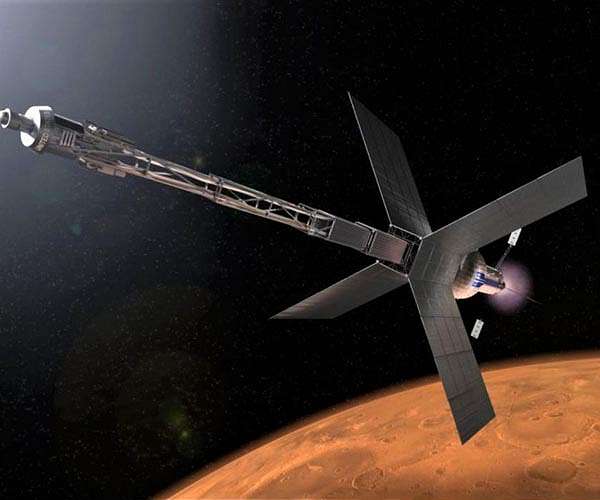Hera initiates journey to mars with key deep-space burn
by Erica Marchand
Paris, France (SPX) Nov 09, 2024
ESA’s Hera mission has completed its first major trajectory correction since its October 7 launch, positioning it for a vital Mars gravity assist scheduled for March 2025.
On October 23, Hera’s trio of orbital control thrusters operated for 100 minutes, altering its speed by roughly 146 m/s. A secondary 13-minute burn on November 6 added an estimated 20 m/s, ensuring the spacecraft stays on course.
“Deep-space manoeuvres are often split into parts,” explained Sylvain Lodiot, Hera Spacecraft Operations Manager. “The first, larger burn does most of the work. Then, after precisely measuring the spacecraft’s trajectory, we use the second, smaller burn to correct any inaccuracy and provide the rest of the required boost.”
These manoeuvres were supported by ESA’s control team at the European Space Operations Centre (ESOC) in Germany. Using deep space antennas in Spain, Argentina, and Australia, they monitored Hera’s velocity changes during each burn.
“We are now analysing Hera’s new trajectory following the second burn,” said Francesco Castellini from ESOC’s Flight Dynamics team. “It appears to have gone very well. We will execute a much smaller correction manoeuvre of a few tens of cm/s on November 21 to fine-tune the trajectory for the upcoming Mars flyby.”
Hera’s course to the Didymos asteroid system will benefit from this gravity assist, significantly shortening the travel time and conserving fuel. “We are very fortunate that Mars is in the right place at the right time,” noted Pablo Munoz from ESOC’s Mission Analysis team. “This design uses Mars’s gravity to boost Hera’s speed, allowing it to reach Didymos months ahead of schedule.”
In addition to its trajectory alignment, Hera’s flyby includes a close approach to Mars’s moon Deimos, offering a rare scientific opportunity to study the small satellite from a distance of just 300 km.
Looking ahead, Hera will conduct another deep-space manoeuvre in February 2026 and begin a sequence of rendezvous operations between October and December 2026 to approach Didymos. There, it will investigate outcomes from NASA’s DART mission and probe key questions about binary asteroid systems, including the internal structure of Dimorphos and the nature of the crater left by DART’s impact.
ESA’s asteroid research continues to advance. October marked Hera’s launch and early discussions for the proposed Ramses mission to Apophis. The Near-Earth Object Coordination Centre remains active in asteroid discovery and monitoring, recently aiding in the identification of the tenth asteroid discovered prior to impact with Earth.
Next week, ESA’s Planetary Defence Office will host a workshop at ESOC, gathering international experts to enhance the measurement techniques for potentially hazardous near-Earth asteroids. The event is supported by the European Commission.
Related Links
Hera at ESA
Space Tourism, Space Transport and Space Exploration News



